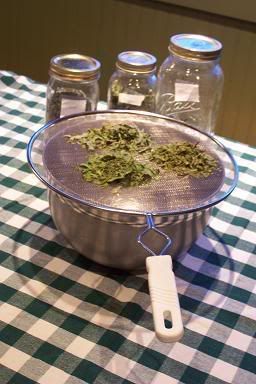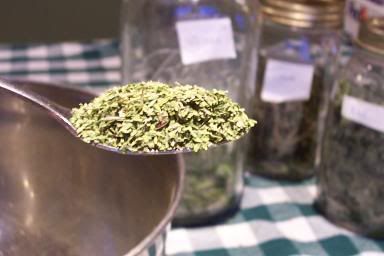Dateline: 25 June 2008
Updated: 27 April 2013
Much of the “good life” revolves around good food. I define good food as fresh, wholesome, and homegrown (or locally grown) without the use of pesticides and other synthetic chemicals. Good food is food that not only tastes good but is also a powerhouse of natural nutrition.
Fresh salad greens rank near the top of the hierarchy of nutritious foods. Leaf lettuce, chard, kale, beet greens, and spinach are incredibly good foods. Can anyone tell me of a food that is more healthful than such salad greens?
If everyone ate a homegrown salad of mixed greens every day of their life they would have less health problems and more vitality. We all know that, yet who does that?
Most who are cognizant of the goodness of salad greens crave them out of season and enjoy them in season. But, for a variety of reasons, as the garden season rolls on, we don’t eat greens as much as we thought we would in the winter. That’s not good, and if your mother isn’t around to remind you, let me clearly state: “You should be eating more salad and less of that other stuff.”
Now, having said that, I want to tell you about a remarkably good idea for easily incorporating greens into your diet all the year round.…..
There is a fellow by the name of Rick Machado out in Southern California who is an innovative small-scale farmer. One of Rick’s goals is to “farm at the most basic, simple, uncomplicated, non-mechanical level possible.” Another goal is to “work to make a profit, believing that the only way to keep the family farm is to make it pay for itself.” And yet another goal is to “confidently promote farming as a viable profession for anyone who wants to make a difference.” Words like that inspire me.
One of Rick’s innovative farm ideas is a product he calls, Garden Salad Flakes.
Garden Salad Flakes are a mixture of dehydrated greens. Rick harvests, washes, dries, and packages the small flakes in re-sealable mylar bags. Then he sells the product to health-conscious people, like me.
I bought a package of Garden Salad Flakes from Rick because I was so intrigued with the goodness of the whole idea—especially when I read the following information from Rick’s web site:
Hearing about a new procedure that tests foods for their antioxidant power called The ORAC test, we sent a small amount [of Garden Salad Flakes] to a lab in Massachusetts. Antioxidant capacity, they told us, is more than just vitamins. It’s a combination of everything contained in the food. And they “score“ each food; so that when you buy fruits or vegetables you know which ones have the highest amount of antioxidants in them.
Prunes score the highest with 240 ORAC units per five grams. Raisins are next with 120 ORAC units per five grams. Kale is the highest vegetable scored with 65 ORAC units per five grams.
Our Garden Salad Flakes came out with an amazing score of 2450 ORAC units per five gram serving. That’s right, two thousand four hundred and fifty. The antioxidant capacity is off the charts. Can you just imagine the nutritional benefits of taking just one tablespoon a day?
Is that amazing, or what! After I bought one package of Rick Machado’s Garden Salad Flakes I bought another. Then, when summer rolled around, I dehydrated large quantities of my own homegrown greens.
The package of Garden Salad Flakes that I bought from Rick lists the following greens as the ingredients: “kale, broccoli, spinach, cabbage, amaranth, quinoa, chard, wild chicories, carrots, watercress, several asian greens, red and green mustard, beets, mangels, alfalfa, red clover, wheat, barley and oat grass, lettuce.”
Personally, I’ve dehydrated spinach, kale, dandelion, chard, parsley, nettle, and lamb’s quarters which is a prolific and nutritious weed. I dried the greens in the same electric food dehydrators I use to make my garlic powder. Then I packed them into canning jars. When I want to use the greens I rub them through a screen sieve to separate out the hard stems. Here’s a picture of some of my greens on a screen over a bowl.

That flat screen is only for illustrative purposes because I couldn’t find the bowl-shaped sieve that I typically use. I have some spinach, Kale and chard on there. It’s all green but the chard has a little red. Here’s a picture of a spoon-full of my homegrown dried greens:

For individual flavor, I like spinach and kale best. Dandelion is, of course, very bitter but an incredably healthful green. I have a whole jar of dried nettle from 2006 and have yet to use any of it. By the way, the dried greens are perfectly preserved and will keep for years. And, dehydrating at low temperatures preserves more nutrients in food than any other food preservation method.
Rick says six good pinches of his Garden Salad Flakes a day equals one big bowl of salad greens. So, if you mix a spoonfull of the flakes with some applesauce or yogurt, and swallow it down, a whole bowl of salad greens springs back into shape in your stomach. Imagine that!
Few people who grow and preserve food from their garden consider drying salad greens. But this idea is so easy to do and so good for you, that I think more people should be doing it. But first, why don’t you order a package of Rick Machado’s Garden Salad Greens and try them for yourself. Here’s a link to his web site: Garden Salad Flakes from Machado Farms.
In closing, I’d like to ask a final question of you. Which do you think would be better for a person’s general health?: A synthetic, multipurpose, manufactured vitamin pill, or a spoonful of dehydrated homegrown salad greens, with 2,450 ORAC units?

























































































































7 comments:
I just this year figured out that it might be wise to dehydrate greens and have started with some beet tops. This post gives me lots of food for thought, no pun intended.
Judy
oh my goodness, what an excellent idea! and - if someone just couldn't stomach the dried greens, they could encapsulate them.
thanks for sharing this!
I suppose, if you added it to soup or something cooked, you would destroy most of the benefit, huh?
I'm not sure that rehydrating the greens in a soup would damage them any more than dehydrating them in the first place especially if you throw them in at the end. Sure, long cooking wouldn't be good, but a good, homemade soup is an awfully nourishing and delicious way to get your veggies, dehydrated or not.
I never really have gotten in to dehydrating much--I will have to rethink this. Nutrition aside, it sure will save on storage space!
I sure do enjoy checking in here and reading the neat things you post. Thanks.
Another Heather
Greetings from Southern Illinois, Herrick! I bought beets from the farmer's market the other day, and I roasted them, (delicious!)but threw away the greens (silly me!). I went straight to Rick's website and ordered a bag of Garden Salad Flakes as soon as I read your post. I'm looking forward to trying them, and I'm waiting patiently for the 2008 garlic crop, too!
Sincerely,
Carla Hays
Hello to Herrick and all his blog readers.
Many thanks Herrick, for the blogspot on my SaladFlakes. And many thanks to all who ordered from me, we're humbled and grateful. All orders are shipped same day if received by noon, PST, or next day at the latest.
A word about the SaladFlakes. We worked on the exact greens for a couple years before we put it up for sale.
Notice there are many various greens. We were looking for balanced nutrients, not just a jumble of whatever green showed up. We were careful not to have too many greens with oxalic acid- it may tie up your calcium. Not too much heavy iron. Not too much Vit A. Carrot tops, for example, are very high in Vit E. One standard deviation above the mean. Protein in clover and alfalfa. And we use large leaves, not small. The larger, the better.
And we like bienniels- plants that sit in the ground for two years before going to seed. The longer the time in the ground, the more nutrition you get. When your mom told you to eat your greens, she didn't mean baby salad. She meant kale, collards, chard. Biennials.
We also use greens that show up sporadically on our farm, high in nutrients, but are "wild" or volunteer. Pigweed, wild flax, fennel, early foxtail grass, wild mustard, and many others. Just a bit here and there. Have to keep it balanced.
We breed a lot of our own varieties. We breed all our kales, spinach, lettuce, broccoli, corn, and most of the rest. This is important, because we breed for drought tolerance. This means we use less water for our plants, critical for nutrition. The less water used, the less the nutrients are in solution, and the more nutrients remain "solid", and are retained. Very important.
Look for a new green soon- a leaf from a tree called Toona Sinensis- commonly known as The Stir Fry Tree. Very very high in antioxidants, one of the most nutritious edible plant kingdom varities yet discovered. Here's a link to read. Cut and Paste it.
http://203.64.245.173/reta6067/reta%20bulletin3.htm
We have had a tree for years, and I am now drying the leaves, grinding them, and putting them in capsules. Of course, I already put some of the leaves into the SaladFlakes.
Once again, thank you, Herrick and customers. and please pass the word. Salad Flakes are unique, healthy, and smart.
Sincerly-
Rick Machado.
Machado Farms
www.machadofarms.com
farmrik@gmail.com
Just wondering why to use big and not small leaves for drying? Aren´t they tuffer/more fiber?
The link to Machado Farms has been taken over by malware. Do not click on it.
Post a Comment